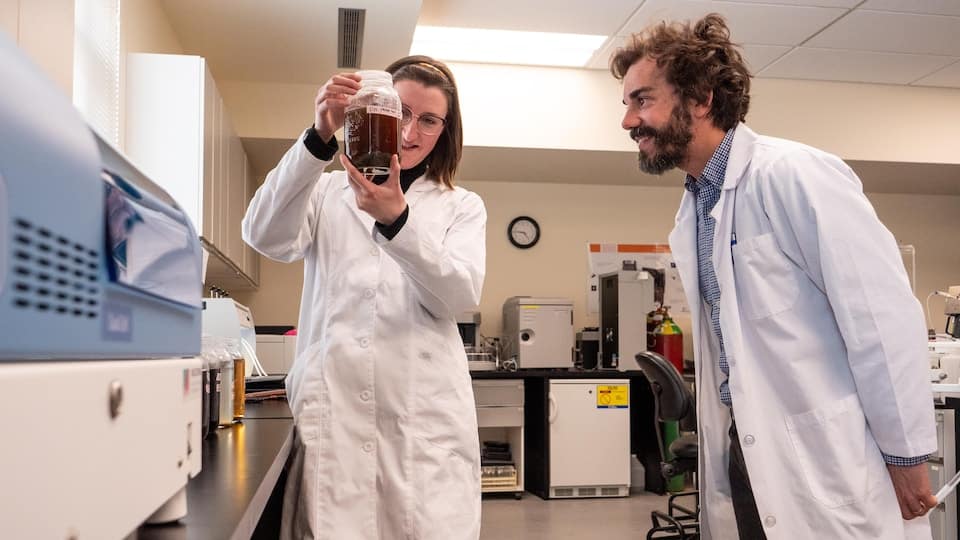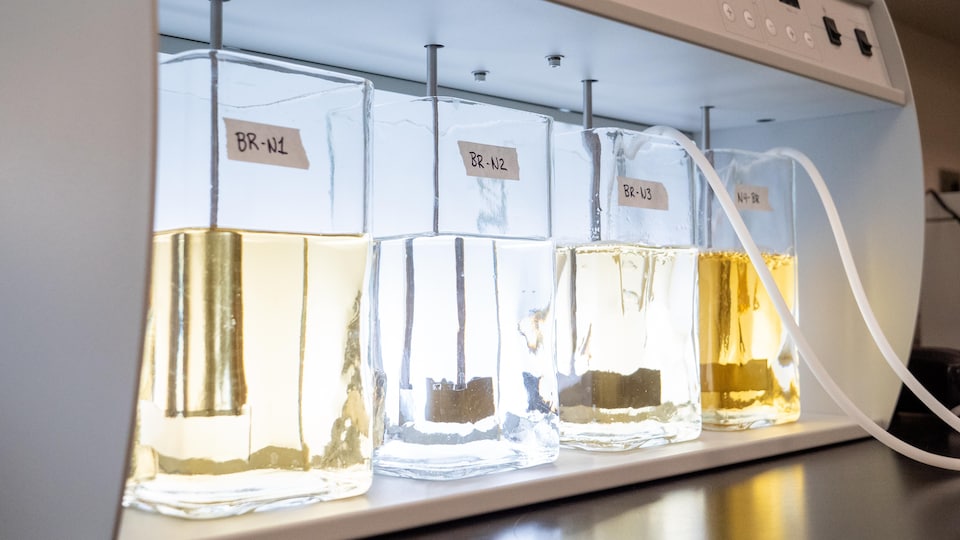These are bacteria that can, say, [manger] nitrate […] and somehow remove it from the so-called contaminated water
explains Guillaume Nielsen, Industrial Research Chair in Northern Mine Remediation at Yukon University. These denitrifying bacteria attack nitrate to satisfy their need for oxygen and thus transform it into nitrogen.
It is by relying on these bacteria that her laboratory and master’s student Taylor Belansky hope to be able to clean up the nitrate that is found in excessive quantities in the waters of Yukon mines.
Nitrate occurs naturally, but it can be found in high density in mines since it is a residue of the explosives used there.
Since some bacteria feed on this nitrate, the idea of the research laboratory is to develop them to make them more effective, despite the harsh weather conditions in the North.
These little buggers there, they are impacted by the cold just like us. If it’s too cold, they work less
explains Guillaume Nielsen.
” The technologies that we use, that we are trying to develop, which are based on nitrifying, denitrifying, sulphate-reducing bacteria and many others, these technologies are already used and developed in the South, but they are not effective or not sufficiently studied in the North. »
That’s why Taylor Belansky has to find a way to develop them. She first took samples from various locations around the Minto mine site, about 240 km northwest of Whitehorse, to identify the bacteria present.
Based on bacteria already present in the North, it ensures that they are naturally more adapted to this environment than bacteria already used in the south of the country.
She will study them to optimize their capabilities in a lab-scale bioreactor before they can one day be used in mines and let them work on their own. It is, in a way, asking nature for a helping hand and this approach excites the student researcher.
” We got a problem, that we created [les humains], and to which nature already has an answer. It’s really great to be able to harvest and work with these bacteria that are already using nitrate in their natural state. »
Thanks to funding of $75,000, including $45,000 from Mitacs, a national non-profit research organization, and $30,000 from the mining company Minto, she will be able to work on this project for two years.
The Yukon University lab works in partnership with the Yukon Mines Research Consortium, the seven active mines in the Yukon. Mining companies are particularly interested in the laboratory’s research to develop future technologies that will improve their practices and their environmental impact.
The use of bacteria, a so-called passive technology since it does not require human intervention and is based on natural biological and chemical processes
would, according to Guillaume Nielsen, limit the risk of potential accidents since physical structures such as dams, retention tanks, treatment, require maintenance after the life cycle of a mine
.
He adds that on the contrary passive technologies that rely more on bacteria, such as filter marshes, require much less maintenance
.

Reference-ici.radio-canada.ca

